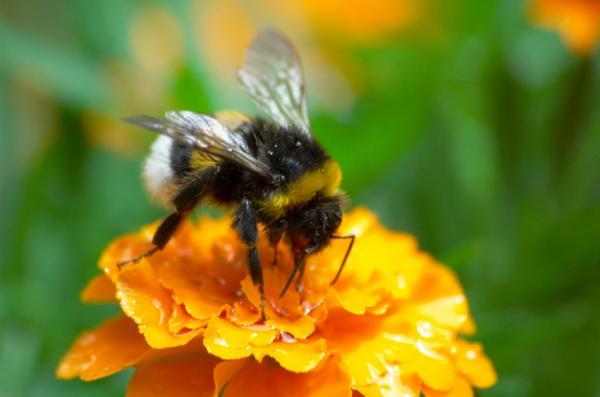Will Sarah Burton's Queen Bee Femme Fatales Suffer in Collapse of Global Honey Bee Populations?
/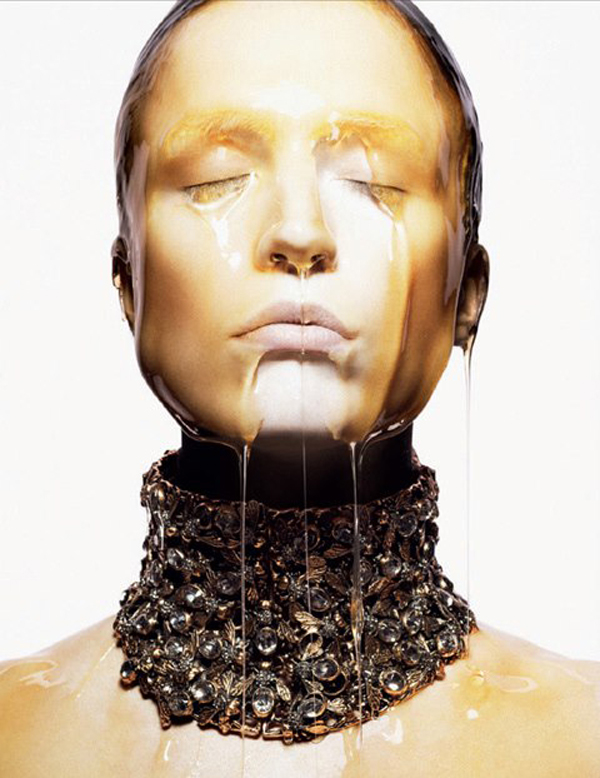 Sarah Burton’s Queen Bee World of Alexander McQueen S/S 2013 (left)
Sarah Burton’s Queen Bee World of Alexander McQueen S/S 2013 (left)
 Manon Leloup Is A Queen Bee in David Sims’ Alexander McQueen S/S 2013 Campaign (right)
Manon Leloup Is A Queen Bee in David Sims’ Alexander McQueen S/S 2013 Campaign (right)
Sarah Burton’s Queen Bee World of Alexander McQueen Spring Summer 2013 AOC GlamTribale
In a refreshing take on “femme fatales”, conceived in Britain which is deep in diagnosing reasons for the global collapse of honeybees, Burton created a deeply sensual theme of female empowerment, control, rigorous architecture, sex and nature dedicated to — Queen Bees.
Sarah Burton’s honey bee collection for Alexander McQueen is a splendid example for us to show readers how a wide variety of Smart Sensuality issues and concerns link together at AOC.
Anne is reading …
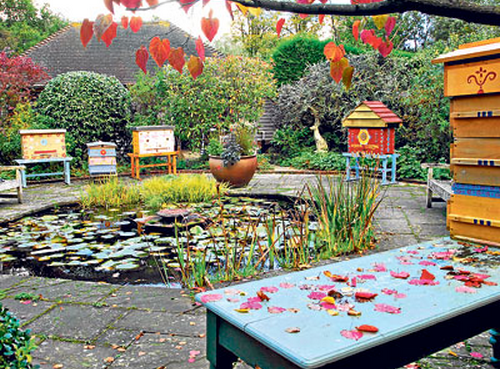 Heidi Herrmann’s bees live in colorful, artistic houses.
Heidi Herrmann’s bees live in colorful, artistic houses.
Why ‘natural’ beekeeping could save our honey-making friends The Telegraph
Wild honeybees face extinction in the UK, with a 53 percent decline in managed honeybee colony numbers from 1985-2005. The conservative Telegraph writes:
Parasites and disease, climate change and air pollution all have an impact on bee health, but perhaps the most serious of all is the impact of pesticides.
The answer, says writer Jean Vernon, may like with natural beekeepers like Heidi Herrmann, trustee and co-founder of the Natural Beekeeping Trust. Heidi marches to her own drummer, when the topic is bees.
Now approaching folk heroine status in some beekeeping circles, Heidi has sometimes been described as a shamanic beekeeper. This witch doctor image doesn’t endear her to some traditionalists, but has inspired beekeepers across the world. Today she gives talks and runs workshops for like-minded enthusiasts.
“Bee colonies have very distinct personalities, and I suspect that attributing these differences to the genetics of the queen bee is a little simplistic,” she says. “There is much more involved; grasping the subtle characteristics of a particular colony requires us to make sustained efforts in observation, and to let go of our habitual cause-and-effect thinking.”
Heidi Herrmann shares a view on declining bee populations that offers a new perspective. The naturalist believes that swarm suppression — a universal technique employed by most conventional beekeepers to prevent bees from leaving the hive and taking honey with them — is deadly for bee populations.
Heidi’s hive was spotted in a documentary film called ‘The Queen of the Sun’ (see below).
A chance encounter with the film’s producer put them in contact with its creator, Guenther Mancke, a German sculptor and master beekeeper. His sun hive is a womblike object that mimics a natural colony.
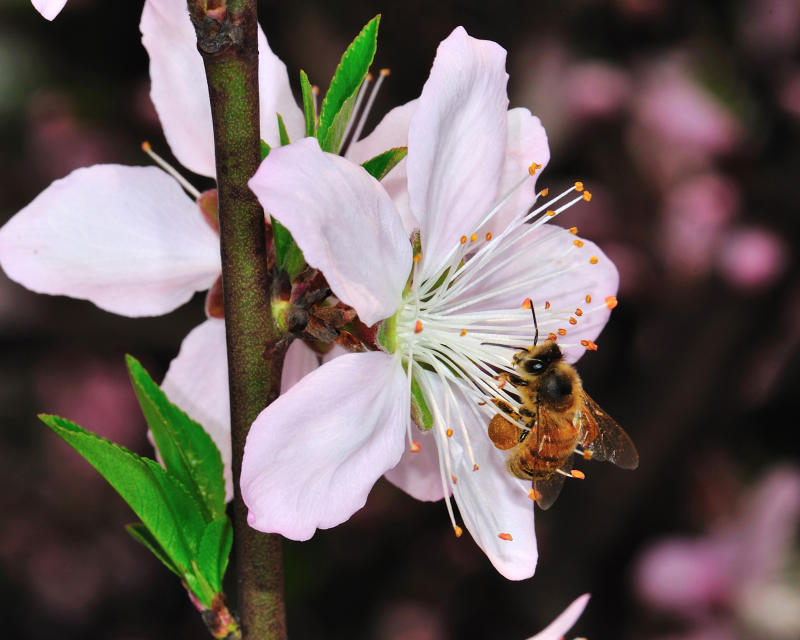
European Agency Says Insecticides a Threat to Honey Bees WSJ 1/16/13
European authorities have identified three neonicotinoids or insecticides long believed to contribute to plunging honey bee populations and demanded far tougher scrutiny of their use. The European Food Safety Authority decision that “high acute risk” exists to honey bees when these insecticides are applied to cereals, cotton rapeseed, corn and sunflowers.
The U.S. Environmental Protection Agency, which regulates pesticides, says it is unaware of any data showing that neonicotinoids have contributed to the collapse of bee colonies. Researchers at the U.S. Department of Agriculture are examining the issue, but the department says it has found no evidence linking use of the pesticides to mass bee deaths.
Queen Bee Brain Power
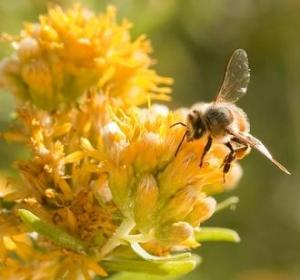 Bees Can ‘Turn Back Time,’ Reverse Brain Aging Science Daily 7/3/12
Bees Can ‘Turn Back Time,’ Reverse Brain Aging Science Daily 7/3/12
Researchers at Arizona State University have determined that tricking older, foraging bees into doing social tasks inside the nest result in positive changes in the molecular structure of their brains.
During experiments, scientists removed all of the younger nurse bees from the nest — leaving only the queen and babies. When the older, foraging bees returned to the nest, activity diminished for several days. Then, some of the old bees returned to searching for food, while others cared for the nest and larvae. Researchers discovered that after 10 days, about 50 percent of the older bees caring for the nest and larvae had significantly improved their ability to learn new things.

Social Queen Bees Have Bigger Brain Power for Learning, Memory 2/23/2011
The ‘social brain hypothesis’, known also as the ‘Machiavelli hypothesis’, is based on the idea that to maintain power and control in groups, you need people with big brains. It assumes that leaders will have big brains capable of adeptly processing multiple initiatives simultaneously with effective results.
While researchers have studied brain sizes in animals for years, it’s been difficult to make direct connections between brain size and sociality. A May 2010 study on social bee queens gave interesting insights into the ‘social brain hypothesis’.
Megalopta bees exhibit one of two types of social behavior, writes Science Daily
Either a bee lives as a solitary queen, going out from her nest to forage for her own food or she can be a social queen—a stay-at-home mom. In that case, one of her daughters goes out to forage for her, so she rarely leaves the nest. Her daughter’s ovaries don’t develop, and she never leaves her mother to become a queen.
The brains of the social queens were identical in size to the solitary queens, but the area associated with learning and memory — the mushroom body — was bigger and more complex in the social queens. Just being in charge and directing from home base impacted brain complexity in a simple mother/daughter bee relationship.
Plunging Bee Populations Affect 70 Percent of Global Food Supply AOC Green
Monsanto may sound as if it has the global food supply under control, but that’s a delusion. The UN report warns that of the 100 crop species that produce 90 percent of the world’s food, more than 70 are pollinated by bees.
“Human beings have fabricated the illusion that in the 21st century they have the technological prowess to be independent of nature,” said Achim Steiner, the executive director of the U.N.’s environmental program. “Bees underline the reality that we are more, not less dependent on nature’s services in a world of close to 7 billion people.”
The bee report, ‘Global Bee Colony Disorders and other Threats to Insect Pollinators’, concludes that bees are early warning indicators of the health of animal and plant life. Multiple factors ranging from insecticides that damage a bee’s memory to climate change are causing the dramatic declines in global bee populations. via UPI
Bee Brain Magic

Dementia Reversed in Half of Bee Brains By Changing Social Tasks AOC Green 3/23/11
Norwegian scientist Gro Amdam believes she is bringing hope to people with dementia. Professor Amdam is a expert in studying bee brains, whose brain cells are surprisingly similar to humans. When she makes a discovery about bee brains, the chances of her research being applicable to humans is high.
Bee Brains Learn Which Smells Will Deliver the Sweets AOC Green 2/28/12
Nectar-collecting bees were caught and sent to a lab where they were exposed to five difference artificial fragrances. Next the bees entered a learning phase, where one of the odors was always followed by an offering of a drop of sugar solution.
Further research confirmed that during the conditioning phase of the experiment, the learning neurons in the bee brain remained quiet. But three hours after learning, more neurons fired up confirming to researchers that they had actually found the long-term memory learning part of the bee brain.
With Tiny Brains, Bumblebees Solve Complex Flower Routing Math AOC Green 10/25/12
Scientists at Royal Holloway, University of London and Queen Mary, have discovered that bumblebees can find the solution to a complex mathematical problem that keeps computers busy for days. Bumblebees may look like they’re darting around, flirting with one flower after another. In reality, bees are effectively solving the ‘Travelling Salesman Problem’, and they are the first known animals to do so.
Bees Able to Distinguish Human Faces AOC Green 2/9/12
The bees were shown five pairs of different images, where one image was always a face and the other a pattern of dots and dashes. Bees were always rewarded with sugar when they visited the face while nothing was offered by the non-face pattern. Having trained the bees that ‘face-like’ images gave them a reward, scientists next showed the bees a completely fresh pair of images that they had not seen before to see if the bees could pick out the face-like picture. Remarkably they did. The bees were able to learn the face images, not because they know what a face is but because they had learned the relative arrangement and order of the features.

Queen of the Sun Documentary

